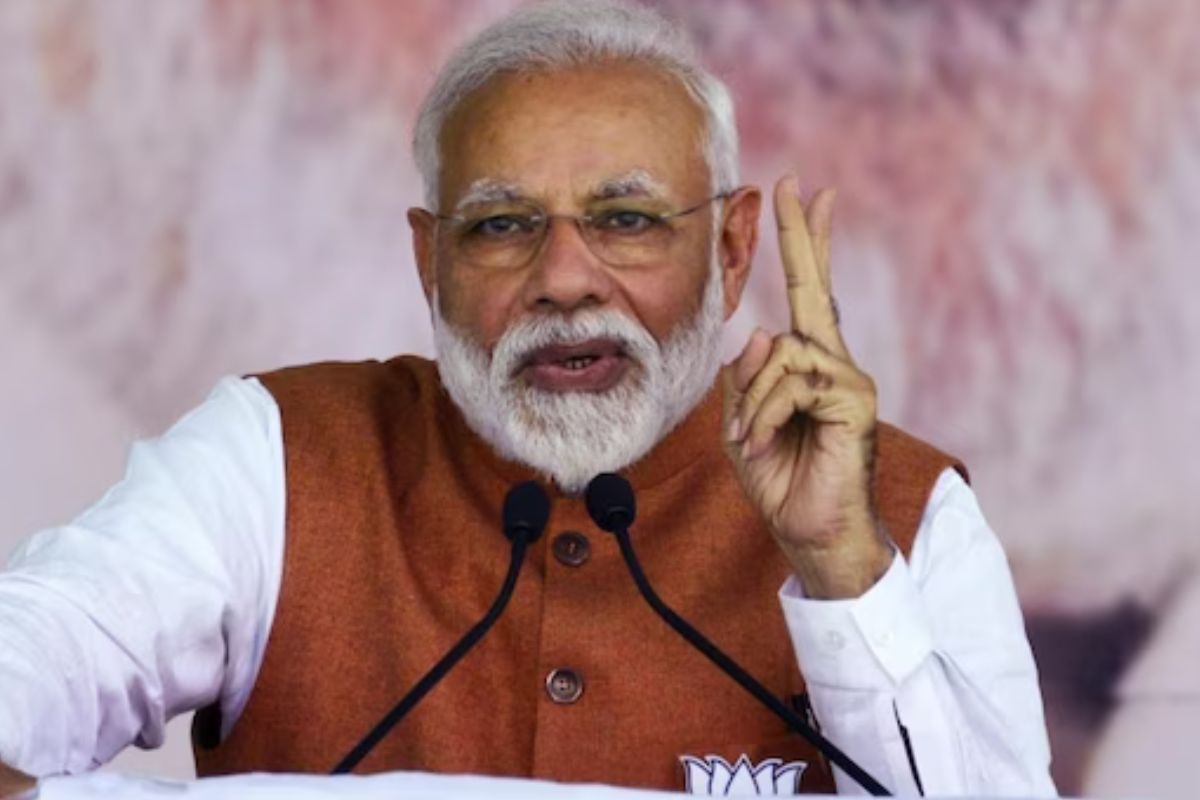PM highlights Shashi Tharoor’s article on Operation Sindoor’s global outreach
Prime Minister Modi shared the article on his X handle, bringing attention to the importance of humanitarian diplomacy.
Till date under Pradhan Mantri Surakshit Matritva Abhiyan around four crore pregnant women have been examined and have benefited through this scheme.
Statesman News Service | New Delhi | June 6, 2023 9:20 pm

PM Modi (File Photo)
Prime Minister Narendra Modi on Tuesday said every initiative of the NDA Government in the last nine years reflected its belief in the limitless potential of Indian women.
In a tweet, he said: “Every initiative of the NDA Government reflects our belief in the limitless potential of our Nari Shakti. Their dreams are building a stronger, inclusive and brighter India. Do see the NaMo App for interesting content on #9YearsOfWomenLedDevelopment.”
Advertisement
In order to build a gender-neutral equality system, and to bring women at the forefront of all incisive, positive developments, the government focused on a holistic approach, the document shows.
Advertisement
The government planned vigorously for the transformation of the historically neglected section of the Indian society. Starting with the budget, the government in FY 2023-24 has increased the budget allocation for women by 50 times to Rs 25,390 crore from Rs 500 crore in FY 2013-14.
There were unexpected results, as visible from several achievements such as improvement in sex ratio at birth — 934 in 2021-22 as compared to 918 in 2014-15; improvement in maternal mortality ratio with 97 deaths per lakh in 2018-20 as compared to 130 per lakh in 2014-16, along with a significant rise in institutional delivery from 79 per cent in 2015-16 to 89 per cent in 2019-20.
The government started numerous universal women welfare initiatives such as Pradhan Mantri Matru Vandana Yojana (PMMVY) to meet enhanced nutritional needs and compensate for wage loss of expecting mothers.
Till date under Pradhan Mantri Surakshit Matritva Abhiyan around four crore pregnant women have been examined and have benefited through this scheme.
The POSHAN Abhiyaan was started with the goal to achieve improvement in the nutritional status of children, adolescent girls, pregnant women and lactating mothers.
It has been rolled out across all 36 States and Union Territories which means coverage for around 10 crore beneficiaries in 730 districts across India, including 112 Aspirational Districts.
The biggest empowerment initiative for women was economic enablement in terms of financial inclusion. The financial inclusion scheme Jan Dhan has the highest number of women account holders which is around 27 crore.
The highest number of beneficiaries’ getting loans under Pradhan Mantri Mudra Yojana and Stand Up India are of women. Around nine crore women have mobilised into 82.61 lakh Self Help Groups. Women are now looked upon as more than home-makers, they are looked at as nation builders too.
The impact of such schemes is manifold. It has made women take control of their own finances making them self-reliant. It has also given them the much needed financial independence and has enabled them to take decisions on their own.
The result of such outcomes has been stupendous; at least 47 per cent of the total Department for Promotion of Industry and Internal Trade (DPIIT)- recognised Start-ups have at least one women director indicating a tectonic shift from women development to women-led development.
Twenty-eight lakh women owned MSMEs are making parallel growth stories in India as women have transformed themselves as entrepreneurs, generating jobs rather being mere job seekers.
Self-Help Groups (SHGs) have played a positive and significant role in women’s economic, social and political empowerment. The economic survey of 2022-23 revealed that India has around 1.2 crore SHGs, 88 per cent being all-women SHGs.
While the cumulative loan to SHGs stood at Rs 80,000 crore before 2014, the bank linkages have crossed over Rs 6.25 lakh crore in the last nine years, with the NPAs (non-payment of loans) of just 2.08 per cent.
The participation of rural women in Labour Work Force 2021-22 rose to 32.8 per cent from 19.7 per cent per cent in 2018-19. Even the urban work force participation has improved.
The same can be attributed to policy decisions like increased paid maternity leave from 12 weeks to 26 weeks which gives job protection to women post maternity while she nurses the newborn.
Out of the 2.85 crore sanctioned houses under Housing for All (rural), 69 per cent of houses are either solely or jointly owned by women. By providing ownership of houses under Pradhan Mantri Awas Yojana (Gramin) the Government has fulfilled aspirations of women of owning a pucca house.
Advertisement
Prime Minister Modi shared the article on his X handle, bringing attention to the importance of humanitarian diplomacy.
Prime Minister Narendra Modi Monday paid heartfelt tributes to Syama Prasad Mookerjee, founder of the Bharatiya Jana Sangh, on his "martyrdom day."
Prime Minister Narendra Modi on Monday paid tributes to Syama Prasad Mookerjee, the founder of the Bharatiya Jana Sangh, on his death anniversary, lauding his "incomparable courage" and "invaluable contribution" to nation-building.
Advertisement
